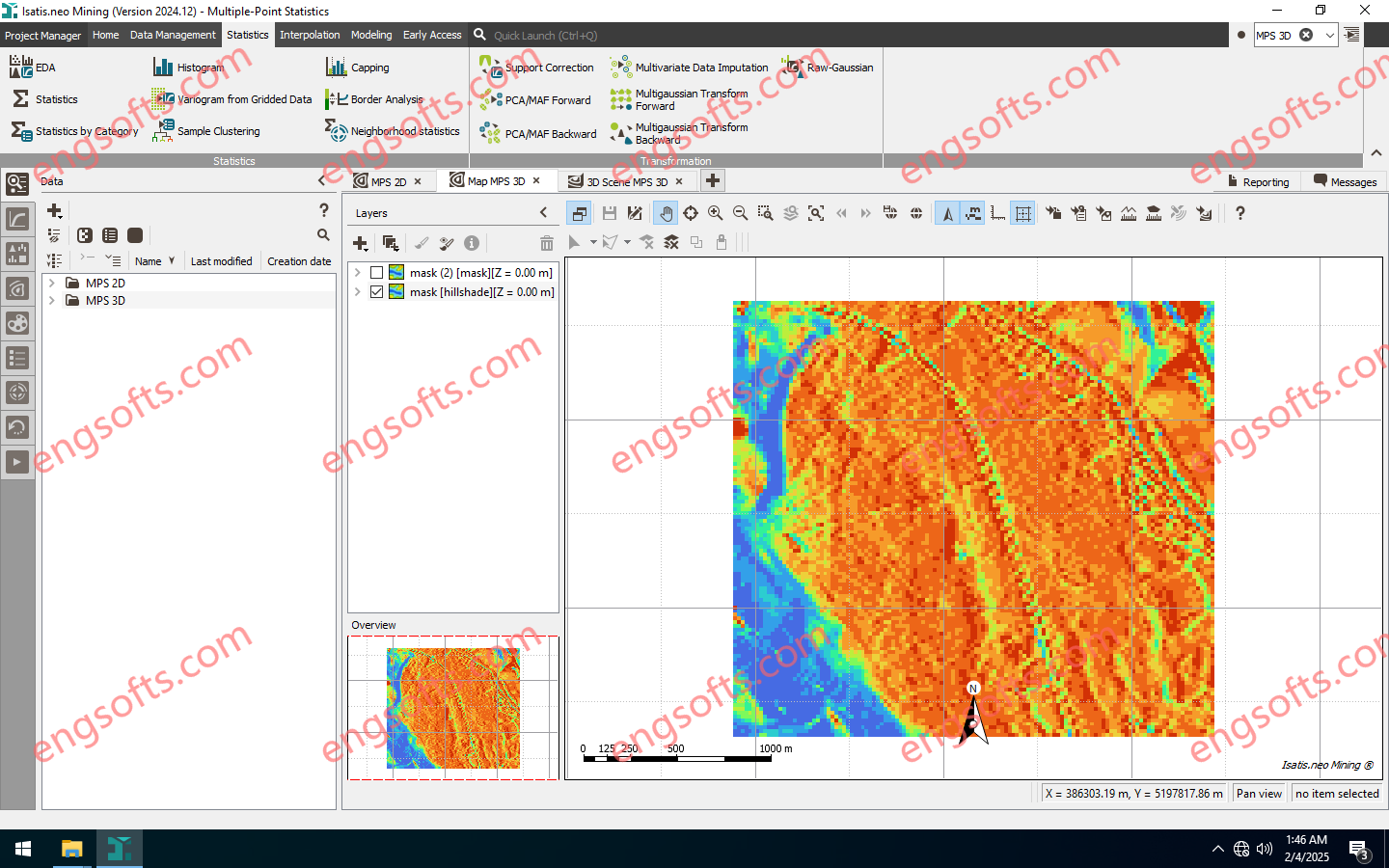Isatis.neo Mining 2024.04, introduces a new kind of graphic to strenghten the validation of your simulation results. Additionally, it comes with new interfaces for exchanging data and objects between Isatis.neo projects and with other software, and provides enhanced Calculator performance.

Under “Statistics” menu, there is “EDA”, “Statistics”,”Simulations”, and other functions are work well.
VALIDATE FURTHER THE SIMULATION OUTPUTS
With the new accuracy plots, you’ll be able to check the model of local uncertainty. This new graphic compares the probability interval against the actual fraction of true values that are inside the probability interval.
MORE STREAMLINED DATA EXCHANGES
- You can now conveniently exchange any data or objects between Isatis.neo projects using the available explorers, including neighborhoods, geostatistical sets, color scales, chart files, scenes, batch files, and files in the public folder.
- A new interface allows effortless import of Fusion boreholes by connecting Isatis.neo to the Fusion database.
- Export 3D grids and points to NetCDF files for easy reuse in QGis, ArcGISPro, or Paraview.
- Access the newest versions of pandas, numpy, and matplotlib with Python 3.11 and be compatible with Vulcan’s latest version.
IMPROVED PERFORMANCE
- The lag slider has been optimized for an almost instant display of the recomputed variogram and associated model as you drag it.
- You can now quickly calculate quantiles on very large datasets, even on those that couldn’t fit in memory in previous versions.
- Benefit from improved Calculator performance for the “Per sample” mode that now uses native C++ instead of Python code for calculations.
MORE NEW QUALITY-OF-LIFE IMPROVEMENTS
- Now, you can quickly move a file from one folder to another by dragging and dropping it with the mouse.
- The PCA/MAF Backward Transformation functionality lets you save outputs as macro-variables.
EARLY-ACCESS MENU
The Early Access menu gives you access to functionalities, the interfaces of which are not optimized. It offers advanced users the opportunity to test them and give their feedback to orientate the latest developments.
MORE CAPABILITIES WHEN COMPUTING RESOURCES (NOT IN THE PETROLEUM EDITION)
With the new “Grade Post-processing” function, you can now easily upscale estimates and simulation results from the SMU grid to the panel grid for subsequent use in mine planning. This enables you to easily generate local grade-tonnage curves at the panel level. Additionally, you have the flexibility to select how to handle undefined blocks and set cutoffs for which grade tonnage curves will be derived. Don’t worry about the grids matching perfectly; the results will be calculated proportionally.

